|

|
-
A simple electric guitar pattern, over which the fiddle plays a phrase, develops as it repeats. Then in with the full band, big chunks growing into a huge loping riff and screaming guitar, before subsiding to the opening fiddle phrase and guitar pattern.
It is a satisfying opening to the first album in a long time from one of the leaders of Sweden's folk-rock phase of the 1990s. Trad is a full-blooded, energizing and very welcome return for Hoven Droven, up there with their finest.
Read Andrew Cronshaw's review and listen to the music.
|

|
-
Bonga Jean-Baptiste, a Haitian-born master vodou drummer now living in New York City has been performing and teaching children rhythm in an attempt to make sure the music's practice lives on. Boula shows the drummer, singer, and Houngan (priest) exploring rhythms he learned as he traveled his home country as a young man. The record allows snapshots of the various regional rhythms, as well as lyrical themes shaped as songs. What they can't possibly capture is the experience one gets from a vodou ceremony; instead, they showcase Jean-Baptiste's vast knowledge of this music and offer an authentic recording of a centuries-old tradition.
Read Bruce Miller's review and listen.
|

|
-
The trio Rå plays traditional Swedish music (except for one track), but quite honestly, it's unlike any take on the past you've heard. This is the lumpity-bumpity version, a gleeful rise through it all by a trio using violins, saxophones, and clarinets. Not your standard line-up, but there's nothing standard about Massiv.
Read Chris Nickson's review and listen to a few of those bumpity tunes.
|

|
-
Two Estonians appear in dark suits and white shirts without ties. One looks like a doctor or lawyer, the other a renegade rocker. But it's what's in their hands that completes the picture and makes it unusual: each has a hiiu-kannel, the Estonian variant of the Baltic bowed lyre, close kin to Finland's jouhikko and also known as talharpa, tagelharpa or in Swedish stråkharpa. The duo - Ramo Teder (hiiu-kannel, vocal, looper, effects) and Marko Veisson (hiiu-kannel, vocal, effects) - are cunningly, palindromically named Puuluup. 'Puu' is Estonian and Finnish for tree or wood, and 'luup' is a fortuitous re-spelling of the English loop. Those two hiiu-kannels, looped and processed, provide the source of all of Puuluup's instrumentation. Their second album - Viimane Suusataja - offers danceable grooves in songs with surreal lyrics, wittily presented.
Listen in and read Andrew Cronshaw's review.
|

|
-
The Vlach people are spread throughout the Balkans, largely as a result of their historical occupation of shepherding. Their language is a Romance language, un-standardized but closely akin to Romanian, rather than a Slavic one, and in Slavic-speaking Serbia the name Vlach has often been used to cover Romanian-speakers in the east of Serbia, and now they're officially recognized as a national minority. Founded in 2009, the Gergina festival presents Vlach music and culture from Serbia... The 2 CD set The Magic of Vlach Music presents performances from its first decade, with good notes on the music and its performers included.
Andrew Cronshaw takes you there.
|
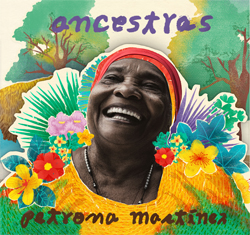

|
-
Colombia's Caribbean coast zone has historically been a refuge for African captives who fled slavery to create palenque communities of maroon resistance. Octogenarian singer Petrona Martínez is a renowned bearer of the polyrhythmic, call-and-response Afro-Colombian bullerengue tradition, a singular female folkdance and song genre. Remarkably, it was only at age fifty that Martínez gained recognition outside her home region, after her first recording materialized in 1989. Such massively popular Colombian artists as Bomba Estéreo, Aterciopelados, and Carlos Vives cite her as a foundational influence.
Joining her are a group of artists that include Peru's Susana Baca ("El Niño Roncón," Cuba's Aymée Nuviola, Benin's Angélique Kidjo and many others. With Ancestras, Martínez pays vivid homage to her own culturally vital matriarchal lineage; to the women of the transatlantic African Diaspora more broadly; and to her artistic compatriots, whom she affectionately refers to as "petronistas." Read Michael Stone's full review and hear some of the music.
Ancestras is our pick for Music of the Month for December. Find out how you can support RootsWorld by subscribing monthly or making a one time donation, and get the CD as our thank you. The CDs were donated by Chaco World Music, so all of your contribution (except the postage) goes to support the magazine and radio.
|
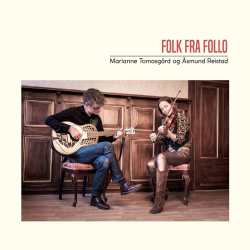
|
-
Folk fra Follo features a selection of little known Norwegian dance tunes played by Marianne Tomasgård (fiddle) and Åsmund Reistad (various guitars, mandola and double bass). Follo is the historical name for an area that includes the regions of Akerhus and Østfold, which, perhaps because they are so close to Oslo, have not maintained their folk traditions to the extent that more rural places have managed. The two featured musicians have been playing together for five years and in their duo have developed their own way of presenting this music in an instrumental combination not that commonly found in Norwegian folk music. Read Mike Adcock's review and hear some of the music.
|

|
-
The trio Salt House's latest recording wasn't made under ideal conditions: it happened during lockdown, with two of the members squirreled away in the Highlands of Scotland, while the third was across the sea in Shetland. What's remarkable is that somehow they managed to put together 5 song EP as warm, natural and utterly comfortable as Working for Zeus. It slips in, feeling like a visit from an old friend, with Ewan Macpherson's vocals on the opening title cut summoning up images of 80s John Martyn or more recent Ben Howard. Voices flows and floats on thermals of music, with gentle accompaniment from the other members that gives some lush support. "Working for Zeus" is an earworm that manages to seem like a hug even as it flies free at the end.
Hear a few excerpts from the album and read Chris Nickson's review.
|
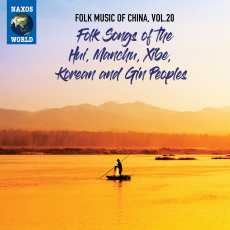
|
-
The fact that this huge country has a central government often makes it appear that there is such a thing as "Chinese music," and what's usually heard is the highly organized, highly skilled instrumental and vocal music of the conservatoire, concert hall or opera, rather than the music of the villages and towns of the many disparate peoples within the political unit of China. The Folk Music Of China series does a great deal to open up an awareness of the variety to be found among those peoples, and the booklet notes are an essential guide to what we're listening to.
Despite the overall title, as the individual CD titles indicate all twenty are collections of folk songs and singing, much of it unaccompanied solo, duet or ensemble, with instruments only occasionally making an appearance. In this 20th volume, though, a variety of instruments does feature, in the music of the Manchu, Xibe, Korean and Gin people.
Listen to a number of examples and read Andrew Cronshaw's review.
|

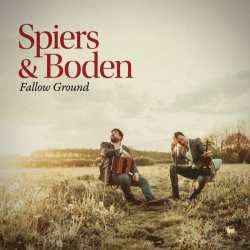
|
-
Days were grower darker, as the news was getting darker still about the growing pandemic... It was hard to tell if the lines on the window were being etched by Jack Frost, or if it was the fingers of the Grim Reaper, tap-tap-tapping with COVID-laced nails. But there was a glimmer of light, and that light was the news that the English folk big band Bellowhead had reunited for a one-off concert to be streamed at the beginning of December 2020. Reassembled is the document of that program. It will likely stand the test of time as a document of something much more important: the sheer joy of people being together and making a glorious noise. Bellowhead had disbanded in 2016, but – given that it was the tenth anniversary of their tremendous album Hedonism, and the general state of the world – a reunion seemed appropriate.
Fallow Ground is another reunion album: that of the duo of John Spiers and Jon Boden. Spiers and Boden put their duo on temporary hold in 2014, and here they come out firing on all cylinders. This is a handsome, beautifully played album that is so brisk that the songs and tunes sound like a much larger band. Further, Spiers and Boden venture off into Australian folk song territory, kicking off with "Bluey Brink" and "Butter & Cheese & All," both connected with the late Peter Bellamy's repertoire. These songs resulted in a revelation for me: I tend to like folk-singers with deep voices, the kind that could age whiskey just by singing at it. Boden, though, has a higher range – and through these Australian songs, the debt to Bellamy comes through.
Join Lee Blackstone at the reunion of an English collective.
|

|
-
The booklet cover to Sofia Rei's Umbral is an extravagant pastiche. It billows; sprouts tropical plant and avian life, including a furled peacock clinging to a drape of muted magenta flowers on her shoulder; and it woos us with floating swags of silky turquoise. Clothed in lemony chinoiserie, Rei holds up to her eye what could be a spyglass or a kaleidoscope, looking out beyond the "umbral," or threshold, and into the future or inward at the kaleidoscope's many colors and possibilities. The cover's sumptuousness, harmonies, sense of movement and discovery, are elements to be reprised by the music and lyrics of this exceptional album. Umbral is painstakingly intelligent yet the album exudes the sensuality that we turn to music for. What's more, the album can be ironic and downright humorous as well.
Rei's muse is Chilean Nobel laureate in literature, Gabriela Mistral, whom she honors in "La Otra," borrowing Mistral's enigmatic and much explored poem of the same name. The interpretations have been many, though they square on women's tendency towards self-blame and to harbor an often destructive inner, other self. Channelling Mistral, she invites women to reflect on their assuming such burdens. But she also hawks Mistral's Other as a woman ablaze, who, "where she took her siesta, the grass curled up," and who radiated "an intense heat that she refused to cool." I got the feeling from the poem and Rei's rendition of it that in owning their struggle, they may be alluding to the wages women have historically paid for artistic expression, if not genius.
Read the rest of Carolina Amoruso's review and listen to some of the songs.
|

|
-
Slovak band Hrdza (the name means 'Rust') have been in existence for 22 years, hence the title of their latest is 22. To celebrate that, for their sixth album they've recorded new versions of their most-played songs. Their sound is impressively big and powerful, with male and female vocals, fiddles, accordion, guitar and other frets, percussion, bass and drums, with guests adding cimbalom and other traditional instruments such as fujara and augmenting the vocals.
Andrew Cronshaw takes you through the music.
|

|
-
Just now and then, a record comes along in which everything about it seems to perfectly embody the broader intentions underlying the work. Lumba is a case in point. Tamala are a Belgium-based trio featuring vocalist Molo Sylla and kora-player Bao Sissoko, both from Senegal, plus Belgian violinist Wouter Vandenabeele and this is their second album. In the sleeve notes we are told that in an unfair world where hypocrisy reigns, "Lumba" represents change, a wish to "look at the world with an open mind, a world in which everyone has the right to exist in his or her own way." Without wishing to stretch the point too much, I couldn't help thinking as I listened that the music they produce together is a telling illustration of that aspirational ideal. The songs (all but one composed by Bao Sissoko) have a predominantly African base yet the generous interplay between Sylla, Sissoko and Vandenabeele - who brings a different perspective to the mix, allows the music to transcend geographic cultural definitions to produce something new and really quite wonderful.
Mike Adcock finds it to be one of his top musical finds of the year.
|

|
-
Sarah McQuaid is a veteran singer-songwriter and guitarist, a subtle and stunning instrumentalist. She's toured relentlessly for years, and released several albums along the way. When lockdown came, it hit her hard; everything came to a halt. Her answer was to record this album in a church near her home in Cornwall, with only her soundman- engineer in attendance. No new material from her pen, but more like a concert, each track performed live and without overdubs, a journey through her career. The result is her latest recording, The St. Buryan Sessions.
Chris Nickson explores the voice and guitar of this American-born artist from Cornwall.
|


|
-
Sarah Aroeste was born in the USA, but her forebears were among the Sephardim, the Spanish Jews expelled from Spain in the 15th century and many of whom settled in the Ottoman empire, including in Monastir (now called Bitola), which is where her grandfather was born. Most of the family was taken to Treblinka and murdered by the Nazis, but her grandfather's cousin Rachel Nahmias escaped to Albania where she was taken in by a Muslim family. Aged 103 at the time of the album recording, she's heard reciting a Sephardic finger-game to one of Aroeste's daughters, singing in Macedonian. Aroeste's aim with the making the album Monastir was to select and arrange ten songs to reflect pre-WW2 Jewish life in Monastir. In the main they're from Macedonian and Sephardic tradition, with some originals by her and others, in Macedonian, Ladino and Hebrew, with the aid of over 30 musicians and ensembles from Israel, Macedonia, Spain, Germany and the USA.
Andrew Cronshaw looks into the history of the city and the music it inspired.
Monastir is out newest selection for Music of the Month. Find out how you can support RootsWorld by subscribing monthly or making a one time donation, and get the CD as our thank you.
|
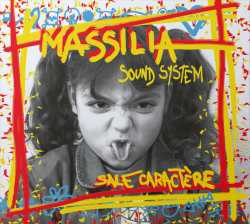
|
-
Sale Caractère - which translates roughly to "dirty character"(or personality) came out in June this year, after a seven year hiatus by Massilia Sound System. This group of gentlemen have been playing together since 1982, so the camaraderie expressed in the album is the real deal, and they take their roles as socio-political troubadours very seriously indeed. The band mixes dub, ragamuffin, reggae with lyrics in French and Occitan- a mix they refer to as trobamuffin- to create urgent, passionate music about the city and the contemporary ills that plague this most spirited of places. This album is a full-on critique of social injustices and inequities mixed with a profound love for Marseilles – a place I know well, and have been missing greatly during Covid- and this album provided a sunlit, socially conscious, musical reminder. Founded in 600 BC by the Phocaean Greeks as Massilia, it is one of Europe's oldest settlements and the oldest city in France.
Martha Willette Lewis explores the music of a city both familiar and mysterious.
|
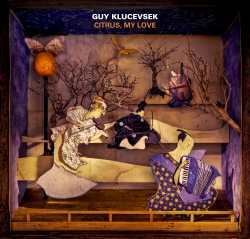
|
-
Two recent releases by composer and accordinionist Guy Klucevsek will give you just a small glimpse at his range and vision. In 1992 he recorded Citrus, My Love, a cycle of original compositions for accordion and strings that featured The Bantam Orchestra. It is being reissued this month. Also, during this endless pandemic 'year,' he and pianist Jenny Lin recorded and released Simple Music, 33 miniatures for theater and film by Georgian composer Giya Kancheli.
I wanted to take these occasions to introduce to (or remind you of) the work of one of the artists I most admire. In addition to music from these albums, I have included a full concert I hosted at WPKN in 2005 with Guy, as well as diverse tracks from some of his other work. There is also a video where Guy talks about how Citrus, My Love was developed.
Read the rest of the editor's commentary and listen online.
|

|
-
All day long, God proposes to us with music.
Thus goes the Rumi-inspired poem that appears on the back cover of Opium Moon's second album, the double CD Night + Day. What the band has proposed for their sophomore release shows their more fiery side compared to their debut. Reflective of the title, the Night portion of the album is more meditative and relaxing, whereas by Day, things are in more of a dancing mood. Either way, the music is richly satisfying and the foursome that is Opium Moon- bassist Itai Disraeli, percussionist MB Gordy, violinist Lili Haydn and santoor player Hamid Saeidi -show their chops to be spot on and their strength as an ensemble skin tight.
Read Tom Orr's review and listen to the difference between night and day.
|

|
-
Focusing on the instrumental and vocal traditions of Hallingdal, a valley and district in Buskerud county, west and north-west of Oslo in south-east Norway, Slåttesong alternates between Erlend Apneseth's fiddling and Margit Myhr's singing, each of them solo... The Erlend Apneseth Trio, with Apneseth on Hardanger fiddle and moraharpa, Stephan Meidell on baritone guitar, samples and electronics and Øyvind Hegg-Lunde on acoustic and electronic percussion, make meaty soundscapes, surging, pulsating, moving between dark, calm, threatening, soaring, with echoes and elements of traditional music particularly from the fiddle, exploring sonorities with a fundamentally Norwegian sensibility. Lokk consists of music commissioned for the dance company Frikar.
Read Andrew Cronshaw's review and listen to tracks from these two albums, and get an idea of the breadth and genre-crossing uniqueness of today's Norwegian music.
|


|
-
Trying to pin down Barbora Xu's music is like attempting to grasp mercury. She's originally from the Czech Republic, but what she plays is steeped in diverse poetry-singing traditions – from both Finland and China (which prove to have more in common than you might imagine), played on various kanteles, guzheng, and guquin – all zithers of different sorts.... While the texts might be ancient, in almost every case Xu composes the music, creating a spare framework that draws on those differing traditions, yet is strongly influenced by minimalism, and interestingly, those pillars complement each other. Even when the sound is filled out, as on the title cut, there's still a sense of stillness, of barely breathing, even as a cello forms an interesting deeper counter voice to Xu's own singing.
Read Chris Nickson's full review and listen to some of the music.
Barbora Xu's album Olin Ennen is our selection for the next Music of the Month recording. Find out more about how to donate and receive the CD.
|

|
-
The music crafted by Kondi Band, the duo of Sierra Leonean kondi master Sorie Kondi and DJ/producer Boima Tucker- aka Chief Boima- has a crucial backstory. Sorie Konoma, who later took the surname of his instrument, known elsewhere in Africa as a likembe or mbira, was born blind and missed an opportunity to release his music commercially in the late 90s, just as Sierra Leone was plunged into a brutal civil war. Abandoned for several days in his home, as the city around him was destroyed, he emerged and started busking, changing his last name in the process. A chance encounter with an American recording engineer in Lungi led to Kondi's first album in 2007. We Famous, the duo's second effort continues the process of taking Sorie's songs, vocals, and kondi rhythms and pushing them into the realm of the club. Boima drops in dive-bombing bass runs, dub effects such as echo and suddenly disappearing percussion, splashes of synth, and electronic drum thwacks. The end result is deep, infectious, and heavy.
Read Bruce Miller's full review and listen to some of the music.
|

|
-
Nuevo tango isn't new. The French/Argentinean Gotan Project and a few others of their ilk have been at it for a good number of years -though there are still trails to be blazed within it. Bassist and bandleader Sascha Jacobsen no doubt knew as much when he formed San Francisco-based Los Tangueros del Oeste (Tango Players of the West). I suppose any band that mixes traditional and modern sounds still runs the risk of irritating purists, but there's no good reason to carp about Alma Vieja. The zesty rhythms of tango are at times smoothed out a bit by electronica additions but just as often enhanced by jolts of flamenco and jazz. And at no time do they lose the characteristic passion that makes tango so appealing and subtly sensual.
Read the full review by Tom Orr.
|

|
-
There's a good argument to be made for Changüi: The Sound Of Guantanamo to take its place as one of the more revelatory recordings of Cuban roots music. There hasn't been a release that takes such a deep dive into a musical style that has existed for well over 100 years. The Guantanamo region is in the extreme eastern corner of the island, and is isolated from the much of the world, even by Cuban standards. 50 miles from Haiti and covered in rainforest in the north and semi-desert in the south, its culture takes on elements of some of its Caribbean neighbors. It's also the place where the tres- a guitar-like instrument heard in a number of different Cuban musical genres- was developed. What sets changüi apart from the more familiar son, is the absence of the West African-derived clave rhythm. In changüi, the tres is buoyed by a cylindrical metal scraper and punctuated by hand drumming that often sounds like the lead instrument. The riffs of the tres drive the tunes, and vocals, like so many African-based musics, lean heavily on call and response....
Bruce Miller digs into the three CDs and 120 page book that comprises this collection.
|

|
-
Guitarist and producer Justin Adams, probably best-known as part of Robert Plant's band, met Mauro Durante, the violinist/singer/percussionist for Italy's Canzionere Grecanico Salentino (GCS) when the pair of them worked on composer Ludovico Einaudi's 2015 Taranta Project. It marked the beginning of a very firm friendship. Adams was a guest on the recent CGS release, and during lockdown the two of them worked up Still Moving. Adams's deep roots lie in the desert blues (he produced the very first Tinariwen album) while Durante's soul is consumed by the taranta music of his native Southern Italy. But they have found that there's plenty of common ground between those areas. Cut in a single session in 2020 during a brief period between lockdowns, just the two of them, this is a place where ideas come together.
Chris Nickson found it all rather majestic. Listen!
|

|
-
Madness is everywhere, it seems. Family, friends, and neighbors are emerging from lock downs due to the COVID-19 pandemic: putting on shoes, gassing up the car, heading to restaurants…while the pandemic continues. Conspiracy theories are rife, while politics have been amped up globally so that the right and the left serve as magnetic poles ripping civil society apart. Main streets lie gutted; refrigerator cars house the dead; meetings are Zoomed, groceries one-clicked. It would all be sobering, if liquor stores had not been considered essential services. Who's behind the mask?
This particular ball of confusion serves the Cypriot band Monsieur Doumani well. The trio is now comprised of Antonis Antoniou (tzouras, electronics, vocals, stomp box), Demetris Yiasemides (trombone, vocals), and, since 2019, guitarist Andys Skordis. Together, they have created Pissourin, which in Greek-Cypriot dialect means 'total darkness.' Listening to their latest music, one might think that Monsieur Doumani have written the soundtrack for the Dark Night of the Soul that we have all been blindly lumbering through. There is a spirituality here that is embodied and intoxicated, the band grabbing you by the shoulders to wake you up in these lucid dreams of songcraft.
Listen with Lee Blackstone to the sounds of darkness as we look for the light.
|
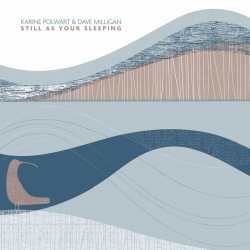
|
-
Karine Polwart possesses an instantly recognizable voice, one that catches the ear with its gentle Scots burr. Her singing possesses such an inviting warmth that it draws listeners in and wraps the song around them, so it's not only the singer who inhabits the song, and that's a very rare gift. This time out, she puts away her guitar and teams up with her neighbor (quite literally, as they live in the same village), jazz pianist Dave Milligan, for an album that takes in a selection of traditional music, a cover or two and some of Polwart's staggeringly good originals. With just voice and piano, the pair do bold, sensitive justice to the exquisite material...
Read Chris Nickson's review and listen to some of the music.
|

|
-
Monoswezi is a five-piece band whose name refers to the countries they hail from: Mozambique, Norway, Sweden and Zimbabwe. The title of their latest album also contains a self-referential clue, Shanu being the Shona word for five which, as well as representing a head count of the band, reflects the fact that this is their fifth album. The African input of Shanu is established from the start on "Kuwonererwa," with Zimbabwean vocalist Hope Masika accompanied solely by ensemble percussion until Hallvard Godal introduces a wash of sound from the mellotron, with Masika adding an mbira rhythmic pattern. The track makes for a promising start to an album which turns out to be something of a mixed bag.
Mike Adcock takes you on their trans-continental journey.
|


|
-
Henri Guédon, a Martinique-born sculptor and master percussionistwas living in France where he led bands as a musician and vocalist. Karma, originally issued in 1975, shows Guédon and company's ability to synthesize Bomba, Tamboo, Biguine, and Zouk into a batch of tracks that have remained infectious.
Hocine Chaoui's Ouechesma- originally released on a cassette in the 1980's is 30 minutes of hardcore Chaoui, a Berber genre that took hold in Algeria's Aures Mountains. Featuring sandstorm blasts from the Gaspa flute underpinned by electronic beats, Hocine's vocals get into a call and response with the flute, kicking up dust and forcing the body to move.
Read Bruce Miller's review of both reissued LPs and hear some of the music.
|

|
-
Sebastià Gris first encountered the guitar at the age of fourteen, taking private lessons in his home town in Majorca. Intriguingly, he spent a year playing on the streets of Stratford-Upon-Avon, in England – a locale famed, of course, as the home of Shakespeare's Globe Theatre. Gris then returned to Spain, studying guitar seriously at the Conservatorio del Liceo, Barcelona. Since then, he has collaborated with many local musicians as arranger, composer, producer and teacher. Llorer, Clau I Canyella is his first solo album. It was recorded, we are told, "almost entirely on the edge of the kitchen counter at home" in Centelles, Catalonia. The opening track "Aeroblues" will leave no doubt that this is something special. Gris coaxes sounds from his instrument which echo numerous genres yet feel entirely original. You'll hear in his music the blues referred to in the title, but also American and English folk tunes, classic country, jazz and, unsurprisingly, Spanish flamenco.
Hear more and read Chris Wheatley's review.
|

|
-
The fairly small world of Danish folk music often feels like an extended family, and that's perfectly illustrated by this pair of new releases. Musically, they're very different, of course, but some of the same people appear on both, helping and supporting, the thread of people that runs through Danish folk.
Mette Kathrine has been one of the country's leading accordion players for quite a few years, but until now her focus has been on traditional music, mostly for dancing (she's also a member of the trio Zenobia, where she stretches her wings in other ways). With Famliealbum, she puts her own compositions on display for the first time... The duo of Morten Alfred Høirup and singer/shruti box player Mia Guldhammer is still pretty new. They put a stripped-down EP in 2019, but this full-length debut fleshes it all out with a number of guests (including, inevitably, Bugge), on a mix of originals and some carefully chosen traditional pieces...
Read more about both of these new recordings and hear some of the music in Chris Nickson's review.
|


|
-
"Music is like a tree, everything is connected, every musical line or rhythm you play is the shadow of something that came from somewhere and it is fascinating to me to see how cultural heritage continues to exist after centuries of geographical transformations."
New Orleans has been oriented to the French and Spanish Caribbean since the slave-trade era. Composer Louis Moreau Gottschalk (1829-1869), born in this Latin American cultural crossroads of German Jewish and Haitian Creole heritage, grew up with a Haitian nanny, and traveled and performed extensively in around the world. The first internationally recognized, distinctively U.S. classical composer, Gottschalk melded his itinerant musical explorations in his work. Likewise, he engaged with and inspired such noted composers as Cubans Ignacio Cervantes and Manuel Saumell, Brazilian Ernesto Nazareth, and Texas-born Scott Joplin, among many others.
Gottschalk's life and music are the inspiration for French trumpeter-composer Yohan Giaume's Whisper of a Shadow: Musical Conversations with Louis Moreau Gottschalk, the fruit of the latter's own musical sojourn through Cuba, Argentina, Uruguay, Peru, North Africa, Europe, and the United States.
Michael Stone listens in on a conversation between two composers separated by more than century.
Whisper of a Shadow is RootsWorld's selection for Music of the Month for September, 2021.
You can find out how to subscribe monthly, or donate one time, and receive this recording.
|

|
-
Six years after its first, the Finnish trio Celenka's second album focuses on material from traditional songs and lyrics of Karelians and Veps, Finnic peoples whose homelands straddle the Finnish-Russian border but are now mostly in Russia. The trio uses an unusual and effective instrumental combination. Jarmo Niemelä's agile trumpet with Eero Grundström's harmonium, pumping and skipping in the powerfully energetic tracks and sometimes orchestral numbers. Emmi Kujanpää contributes the ringing chimes of kantele and generally leads the strong blend of their three voices.
Andrew Cronshaw reviews Celenka's Villoi Varsa
|

|
-
There are a capella groups, and then there's Kongero. The quartet of Swedish women create wonderfully crisp, pure music on Live In Longueuil, recorded on tour in Canada. It's a celebration of the band's 15 years together, and what a birthday present for anyone with ears to hear. On a mix of traditional and self-composed pieces, they shine with a crystalline brilliance... The arrangements are intricate, ranging from the softly delicate to the sweetly robust, always challenging and always satisfying.
Chris Nickson listens to the voices. Join him.
|

|
-
Upon hearing the pastiche of sound of M'Berra by Khalab and M'berra Ensemble, you might begin to wonder what it's all about, as it's replete with seemingly random conversational sounds in various tongues, spliced with French; percussion phrases of compelling mystique; primordial stringed sounds; electronic inputs that waft, crackle, crinkle or shock; and soulful melodies. What M'berra is about is the soundscape of life in the refugee village of M'berra, in Mauritania just over the border with Mali It has been home to people upturned by ongoing raids and armed conflict in the Sahel since the late 1990's. M'berra Ebsemble tap into the inevitable urge of camp dwellers to make music, a first line of comfort in times of loss and grief, fear and panic, in which to seek personal solace and confirmation of group identity. And a stirring hour or two in which to forget.
Due at least in part to the Islamist pogroms against music makers in the Sahel, the M'berra camp has hosted some notable musicians. Apprised of them and their plight, techno explorer Raffaele Costantino, a.k.a. Khalab brought his electronica there and embarked on an ambitious venture to provide them a forum in which to perform and record in community that would, at the same time, give listeners far from the camp an inkling of life there. Challenged to integrate the music and culture of Northern Malians with that of the semi-nomadic Tuaregs, Khalad was able to finesse the fruits of on-site recording under desert conditions into a silky studio achievement of both brazen and suave magnitude. It's worth noting that Fadimata Walett Oumar ("Disco"), the founder of Tartit, a woman-dominated Tuareg band who have seen success worldwide since the '90s, gives an eloquent testament here to the music and its makers.
Carolina Amoruso delves into new sounds of the Sahel.
|

|
-
Named for an area close to where she lives right by the south coast of England, Crowlink, the new five-track EP, marks Shirley Collins' third release since her comeback in 2016 after such a long break when she couldn't sing. She certainly remains the queen of English folk music, her voice instantly identifiable. There's no coasting on ancient glories; her voice inhabits whatever she sings. The only wish is that there was a bit more of her here. Everything is beautifully atmospheric, thanks to Matthew Shaw's field recordings of birds and nature and lush instrumentation, but Shirley only sings on three pieces and contributes a very brief opening spoken-word piece (there's also an instrumental).
Chris Nickson invites you to listen, and watch a new video.
|

|
-
The sound of the ensemble Ľudova Hudba Stana Balážas Jak Śe Mace? (How Are You?) evokes memories of the LPs from the Slovak folklore ensembles of the vinyl era: strong, full throated male and female vocals, brilliant fiddle scampering or passionately soaring, with hot skittering cimbalom, nimble-fingered accordion and driving or slow-bowing double bass.
And indeed the songs and tunes that violinist Stanislav Baláž and his ensemble from eastern Slovakia have chosen are their celebration of, and tribute to, the music and musicians of their region, drawn from archives, old discs and veteran singers and musicians. But the five male player-singers and three female singers (the trio Krasotky) are a very fine, skillful ensemble of the present generation, with much experience playing dances and concerts around eastern Slovakia for the last thirteen years, and these are their own arrangements, in a beautifully played, modern-recorded album.
https://www.rootsworld.com/reviews/balaza-21.shtml
Andrew Cronshaw takes you to Upper Saris to hear the sounds.
|

|
-
For a while now I have been convinced that the sound that best evokes the zeitgeist of this moment is music for a parade, something celebratory-but-rueful, a melancholy protest dance for the streets and our living rooms. The sound is somewhere between a disco thump and a dirge, a rambunctious carnival pulse and a funeral march, reflecting the tumultuous upheaval, ambivalence, and sorrow swirling around us as we try to safely coalesce.
Contained in this sound is the longing to feel the joy of collective movement, all together once again. Orchestre Tout Puissant Marcel Duchamp presents a good case for my thesis. We're OK. But We're Lost Anyway manifests this concept with a rhythmic, droning, layered musical montage of jazz, pop, Celtic, African, and Latin beats, soulful lyrics, and the kinds of sonic collective build one only gets with large groups playing as an ensemble, in real time.
Join Martha Willette Lewis in exploring their strange and wonderful sonic world.
|

|
-
Väsen is one of the best known names to come out of the Swedish folk tradition. They have been around, in one form or another, for over thirty years, appearing at different times as a trio, a quartet and a quintet. In their latest manifestation they have trimmed themselves right down to a duo, Olov Johansson playing two different types of nyckelharpa and a silverbasharpa and Mikael Marin on electric viola and violoncella da spalla, or shoulder cello.
The album, avoiding any cryptic cleverness, is simply called Duo and makes for a very good listen. The sixteen tracks are a mixture of original compositions by the two musicians, traditional Swedish tunes and three pieces composed by the celebrated nyckelharpa player Erik Sahlström.
Mike Adcock finds these duets to feel like an intimate conversation. Listen in.
|

|
-
The members of Eva Quartet, formed in 1995, were all members of the famous ensemble, Le Mystère Des Voix Bulgares, but they came together through their mutual involvement in the Orthodox Church, and in their quartet eschewed the traditional folk costumes for black-dressed elegance and a presentation that moved them into a more classical context, while keeping the traditional-rooted uniqueness. Minka is their first release since 2012... This is clever, meticulously made music, as is that of a classical vocal ensemble, but the voices yearn, surge, linger, interlock, drone and counterpoint, and on the up-tempo pieces fizz and chatter, in ways that no Western-classical ensembles, even the progressive ones, match in style or sound.
Read Andrew Cronshaw's full review and listen to some samples of the music.
|

|
-
Aire! is their first album as a duo, but individually violinist and singer Antía Ameixeiras and chromatic accordionist Sabela Caamaño have been in leading bands and collaborated with many Galician musicians... There's a special communication going on here. The dancing interplay of their instruments expand on melodies, drawn mainly from Galicia but from elsewhere too, and three Ameixeiras compositions, in a magnificently inventive way, filling them with airy swirl... The fine singing has their region's characteristic joyful blend of cherishing warmth and strength.
Read Andrew Cronshaw's review and listen to some of the songs.
|
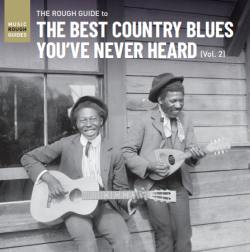
|
-
Thanks to the scholarship and massive reissue campaigns of labels such as Yazoo. Mamlish, Biograph, Wolf, Document, and Herwin... who recognized there was a younger generation of vinyl hipsters who hadn't already discovered the joys of the 78 RPM era, the hydra-headed beast known as "the blues" has been well-catalogued, reissued, re-discovered, re-contextualized, and re-curated... So what on earth is the Rough Guide doing spitting these recordings out once again in the early decades of the 21st century, nearly 100 years after many of the tracks here were recorded? Surely, hardcore blues nerds already have these songs, either thanks to reissues on the above-mentioned labels, or perhaps hidden in the worn grooves of original shellac 78s coveted like treasure. One can only suspect that the Rough Guide has its own crowd.. and for interested folks, The Rough Guide To The Best Country Blues You've Never Heard does not disappoint. It also does a fine job of allowing us to recognize that the term "blues" is a catch-all for music with deep roots into the changes occurring in music and society going at least into the last decades of the 19th century.
Bruce Miller shares some thoughts and tunes.
|

|
-
An album called Silence purporting to have well over an hour's worth of music certainly had me wondering what to expect. Any initial silence is broken by pressing play, after which instead you'll hear a low-level synth drone over which Norwegian jazz pianist Tord Gustavsen adds some tentative introductory piano notes with his right hand. He is then joined by kemenche player Derya Turkan, percussionist Omer Arslan and finally Coskun Karademir, who plays two Turkish long-necked lutes on the album, the kopuz and the bagluma. After three minutes of slow tempo improvisation with each musician setting out his stall, Gustavsen introduces the melody "Gondol," a 19th century piece composed by an Ottoman sultan, which then forms the basis of some rich collective playing.
Mike Adcock explores the spaces in between the notes.
|

|
-
It might be easiest to view Evocazione E Invocazioni by Linguamadre member Davide Ambrogio as an audio play with music. That might not be his intention (he says it's centered "on the idea of Sound, in its aesthetic and ecstatic dimension. In traditional oral music, songs and sounds appear in the context of a ritual"), but it gives a continuity to these pieces sung in the Calabrian dialect of southern Italy. The music might be his, but the lyrics come, in one form or another, from the oral tradition. The magic is in how he's put them all together.
Read Chris Nickson's review and hear some of the music.
|
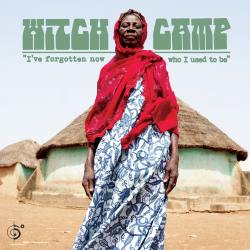
|
-
Netherlands-based Makkum Records has been busy these last few years releasing compilations of Ghanaian masters of the Northern region's two-stringed lute, the kologo. Ayuune Sule's sole track featured on Makkum's This is Kologo Power compilation shows the relentlessness of his approach. His vocals, often shouted with response, are underpinned by a constant buzzing flurry of repetition, demanding surrender from listeners. And while his new release, Putoo Katare Yire, the second international release devoted to him, has examples of his solo playing, most of this is slathered in modern pop trappings, such as auto tune, synthesized rhythms and other production methods that will frustratingly date this record even as they may also help Sule expand his much-deserved global audience.
From the same country but arguably at the opposite end of the musical production spectrum from Sule's latest sits Witch Camp: I've Forgotten Now Who I Used to Be, a collection of musical snippets recorded by women confined to places where they find community and safety after they have been accused of witchcraft due to physical or mental issues beyond their control... the tracks here, often quite short, are instant compositions using whatever sound-making devices are available, played by people who may not have otherwise been musicians. The results, once again, are astounding. Corn husks, tea pots, tins cans, and tree limbs all play roles as sound sources here, as do a capella vocals and more traditional instruments.
Bruce Miller reviews these two contrasting works from modern Ghana.
|

|
-
Originating from South Sudan and now resident in Australia, Let Me Grow My Wings is Ajak Kwai's fifth album to date, a highly personal set of twelve songs, sung in English, Arabic and Dinka. The multi-award-winning composer Jan Skubiszewski lends his production and playing talents, as do Melbourne Ska Orchestra frontman Nicky Bomba, Simon Lewis (Amanaska, Pravana), guitarist Chris Basile and a host of other notables. This record has been a long time in the making for Kwai, who also works as a community promoter assisting fellow migrants as well as hosting her own weekly radio show. "My experiences in Australia inform my songs and my music," she states. "This album is a collection of those hopes and dreams for an integrated future where we are one and can share and be accepted for what my community has to offer."
Read more and listen to the music in Chris Wheatley's review.
|
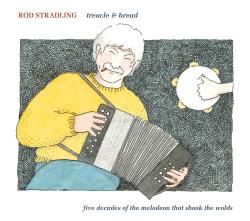
|
-
Rod Stradling and his melodeon have spent decades being everywhere. He was integral to the formation of a host of important English dance bands, including Oak, The Old Swan Band, Phoenix, and later The English Country Blues Band, Edward II & The Red Hot Polkas, and Tiger Moth. Treacle & Bread presents a nice look at the Stradling history, potted nicely by fellow musician and editor of the late fRoots Magazine, Ian Anderson. It's a bountiful helping of straight ahead dance music and innovative, more electric musings. It's twenty one tracks of English dancing pleasure.
Cliff Furnald reviews.
|

|
-
The mass extermination of Armenians a century ago was one test of their seemingly indomitable spirit; another is the fact that contested areas of Armenia were under attack by Azerbaijan while Hokin Janapar was being recorded, and the work was completed in the face of that potential danger. The musical instrument through which Arsen Petrosyan articulates his feelings is the duduk. The double reed woodwind, in addition to being Armenia's signature wind instrument, has snaked its way into the mainstream through its use on various movie and television soundtracks. Djivan Gasparyan remains the name most closely associated with the duduk, but keep an ear out for comparative newcomers like Petrosyan.
Tom Orr shares his thoughts and the music.
|

|
-
The Nordic countries, particularly Norway and Finland, are quite the place for innovative accordion playing, the sort that, chances are, even an accordion-hater would find remarkably attractive. Frode Haltli is one of Norway's prime examples. Since the early 2000s his projects, both solo and collaborative, have spanned new-classical, avant-garde, traditional, and Norway's own special approach to what might be described as jazz but is a misty, atmospheric thing that has little or no connection to the USA.
Avant Folk II pulls it all together with his ten-member ensemble... Haltli describes how such a large ensemble manages to maintain improvisational freedom. "In Avant Folk we use processes from folk music: I present a simple material to start with, that all musicians learn by ear. This way, without any scores at all, we all get a common feel of the phrasing and the rhythms, with flexibility and freedom in further elaboration of the musical material."
Listen to tracks from the album and read Andrew Cronshaw's full review.
|


|
-
Canzionere Grecanico Salentino have 46 years as a band behind them, now well into the second generation of the Durante family's leadership. Formed to preserve and explore the music from their native region in the heel of Italy, they have helped take the pizzica and tarantella to a global audience... Their latest album is the proverbial 'all killer, no filler.' There is not a wasted moment. The sound is richer and fuller, yet it also manages to be more focused, sleeker and stripped back. They have taken everything they have done in the past and turbocharged it. This is urgent music, knocking on your door and demanding to be heard... All the songs are new, but so deeply rooted in the dirt of home that they feel unearthed. Merdiana is not a reinvention of the tradition, but a new layer of it.
Chris Nickson takes you on a global adventure in Salento.
*

"We have lights even at midnight. We can see everything but we can't see the sky.
So we basically are estranged from contact with natural time."
While Meridiana is not a "pandemic album," its creation was affected by the quarantining, and its central theme - our relationship with time - certainly resonates with the introspective time with which we all have been confronted. Months before the Covid-19 virus hit Italy, the group members had decided their next album would explore time from different perspectives. Then they decided the Italian word for a sundial should be the title and organizing principal of the album with 12 songsone for each hour on the clock's face. "The sundial uses light and shadow to measure time. So for us meridiana is a symbol for a reflection about time, about our relationship with time."
Read Mauro Durante's RootsWorld interview with Mart Lipp:
|

|
-
Natacha Atlas' The Inner & The Outer is a bold and unusual piece of work right from the beginning with "The Outer," where the glitching chopping-up of Alcyona Mick's piano line had me convinced there was something wrong with the audio file playback, and anyone buying the limited-edition physical CD will be checking their CD player. But when the rhythm track kicks in and Atlas's vocal floats over it, in a mix of English and Arabic in her distinctive Arabic vocal style, it becomes clear that it's supposed to be like that, and appropriately very unsettling it is, expressing the 'manifestations of fear, mistrust, anger, confusion at the discomfort experienced in a world where we no longer know how to trust our own realities.'
Andrew Cronshaw finds it is like no other Atlas release ever.
|

|
-
Let's start by saying it's fruitless trying to classify Samm Bennett. Don't even think about it. He's a genre of one, crazily prolific – both albums - I Need To Talk To You and Songs About Time And Your Uncle appeared in May and he's released more music since then – and with a decidedly, gloriously skewed vision of the world. Originally from Alabama, he migrated to the North East, and now makes his home in Tokyo. Some of the 22 songs here have previously come out as singles, but there's still plenty of new material. While none of it is especially complex, there's a level of intensity to the work that often borders on the manic; it's definitely not easy listening.
Chris Nickson tries to keep up, and we've added a new video song published just this week,
|
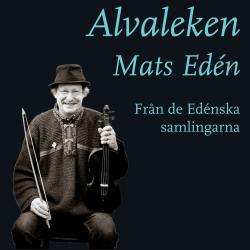
|
-
There are a lot of albums of entirely solo fiddle from Norway and Sweden. That's because the essence of traditional fiddling, particularly in Norway, is a solo thing, accompanied only by the player's foot-tap... Norwegian and Swedish solo fiddling has become a high art, with an often complex-sounding repertoire that is nevertheless mostly music for dancing, with a wide range of rhythms and forms. Mats Edén, from Värmland, in Sweden but close to the Norwegian border, is in both countries a very well-known, admired and respected player and prolific composer. Among much else he's a founder and continuing member of the very long-established and influential band Groupa. This solo work, Alvaleken was simply self-recorded at home and focuses on those of his many compositions that show his strong affinity with Norwegian music, played on four different fiddles.
Read Andrew Cronshaw's review and listen to some of the music.
|
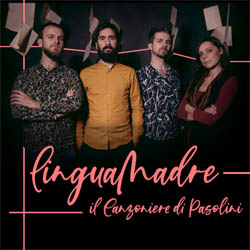
|
-
Linguamadre are Duo Bottasso (Nicolò on violin and Simone on organetto), the Friulan singer Elsa Martin, and the singer and multi-instrumentalist Davide Ambrogio, who wrote "Sa Limba" with Simone Bottasso. he lyrics of were found in Chiaramonte, a village in the northern part of Sardinia. It's a simple and authentic lullaby to a baby in the mother's womb written in Sardinian language.
See a performance of the song, including an English translation of the lyrics.
*
"One must always protect the dialects because they contain the essence of the history and culture of our country." - Roy Paci
Paci's words could serve as a statement of purpose for Linguamadre. This new Italian group has released its first album, Il Canzoniere di Pasolini. All but one of the nine tracks have been adapted from among the 800 poems and traditional songs collected by the poet, novelist, and filmmaker Pier Paolo Pasolini and published in his 1955 collection, "Canzoniere Italiano" (Italian Songbook)... Linguamadre eschews the folkloric, instead drawing on Italian folk music, jazz, and electronics to create contemporary arrangements that are as mysterious, unpredictable, and often as strange as the poems and lyrics themselves.
George de Stefano explores Linguamadre's new, vibrant interpretations of the poems and lyrics collected by Pasolini sixty-six years ago.
|


|
-
I have been a serious fan of African guitarists, particularly from the north and west of the continent, for a very long time, and save for Boubacar Traoré, I cannot think of an artist who so immediately grabbed my attention and amazed me as Boubacar 'Badian' Diabaté. There is a fluid quality to his playing, a sense of casual grace that seems so simple on the surface. You hear the song, you feel the rhythm, and it is only as you are pulled in deeper that you begin to see the expertise of a master craftsman... This is a primarily solo guitar recording, with some occasional light double tracking, his brother Manfa contributing some guitar on just a few tracks, and some percussion by Baye Kouyaté on one other. There's no pyrotechnics, no flash, just a series of perfect songs on Mande Guitar. Read your editor's review and listen to some of the music.
Mande Guitar is our Music of the Month selection for July.
Find out more and subscribe to Music of the Month, or get just this one CD and help support RootsWorld.
|

|
-
Amparo Sanchez, a Spanish diva with traction throughout the Latin world, has spent decades making merry with words set to a kaleidoscope of musical influences. In this same vein, and after a lapse in recording of over six years, we find in Mi Génetica, a reconfiguration of Sanchez' flagship group, Amparanoia (An amparo is a refuge or shelter; the suffix needs no translation), and a generous serving of invited players, adding oomph with a tuba on two tracks, punched up percussion and a more pronounced electric guitar sound. In good cheer, the musicians, known together as the Himnopsis Colectiva, take us on a romp through selected rhythms from the Hispanic world and beyond: from cumbia to chicha, to flamenco, to sounds from the Maghreb, Jamaican reggae and more.
Sanchez is a one-of-a-kind artist, inescapably kindled by flamenco; she is a self-proclaimed cantaora with the soul of flamenco infusing her identity. At the same time she's been schooled in the sway of the Caribbean, taken extended stays in Mexico, picked up the brassy sounds of the Balkans, and is beholden to the US for the blues and Billie Holiday. With a voice that's sensual and imperious, bold and gravelly, she lets you know immediately she's a woman to reckon with, a #MeToo champion long before the movement coalesced.
Read Carolina Amoruso's review of Mi Génetica and listen to some songs.
|
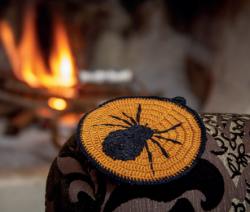
|
-
George De Stefano takes you on a cross-Atlantic journey through the music of Anna Cinzia Villani, in an encounter between her native territory, the Salento subregion of Puglia and its now world-famous pizzica, and the music associated with the Afro-Brazilian martial art, capoeira... On Ulìa -the title means both "olive" in Salentino dialect and "I would" or "I would like" - Villani is backed by Alessandro Lorusso on guitar, berimbau, and several Afro-Brazilian percussion instruments; Massimiliano Peró, accordion, tamburello, and vocals; Francesco De Donatis, tamburello, bendir and duff, two Middle Eastern hand drums, and vocals; and Brazilian guest artist Mestre Canhão on berimbau, vocals, and two of the main percussion instruments used in capoeira, pandeiro and atabaque.
Take the journey into this unique collaboration of styles and artists.
|

|
-
Nong Voru is a collaboration between Ghanaian gyil (xylophone) wizard Alfred Kpebesanne and Brittany
Anjou, the Brooklyn based pianist, vibraphonist and improviser , perhaps best known for her jazz performances on acoustic piano. However, because Anjou has also worked way outside of jazz with the likes of former members of naïve-avant geniuses The Shaggs or the pop-noir of Elysian Fields, it should be no surprise that she has found yet another collaborator in Kpebesaane... And while her presence appears subtle at first, with minimal electric keyboards underpinning Kpebesaane's grooves, by the time the track "The Women are Taking Over the Men" appears, Anjou, as well as a bassist and kit drummer are the driving force...
Read Bruce Miller's full review and listen to tracks from the recording.
|
Support RootsWorld. Subscribe to Music of the Month.
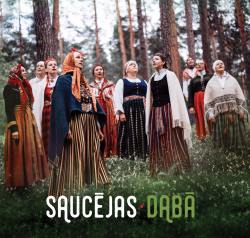
|
-
Saucējas is the female traditional polyphonic vocal group of the Latvian Academy of Culture... but their live performance is far from dull or academic, and their songs, while learned from archive recordings and their own fieldwork, and using traditional techniques and harmonies, emerge their own expression.
It might appear just a conceptual decision to record in natural environments, but apart from undoubtedly being a lot more inspiring and fun than standing in a studio, as Saucejas leader Iveta Tale describes in the CD booklet, singing outdoors in resonant places, particularly on a hill or in the forest, was a strong aspect of the tradition and often referred to in people's reminiscences and in the lyrics of the songs themselves.
Daba, a double CD with sixty traditional songs recorded in various outdoor locations, is a remarkable piece of work.
Read how they recorded, and listen to what they recorded in Andrew Cronshaw's review.
|
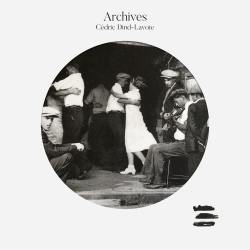
|
-
Archives is an album made by ghosts. Their voices, their instruments, the tapping of their feet…field recordings of French-Canadian people from the 1940s and '50s who live on here, lovingly brought back to life by multi-instrumentalist and composer Cédric Dind-Lavoie. Taking archive material and using it as the framework for new music could be an academic exercise, but that's never the case here. The humanity of the original artists shines through...
Read Chris Nickson's review and listen to some tracks from this unique sound collaboration.
|
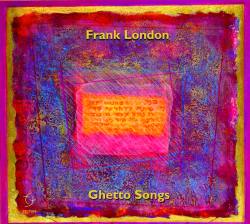
|
-
It's not a recognized genre as far as I know, so you'd likely get a variety of responses if you asked a sampling of people to weigh in on what they consider to be "ghetto" music. Trumpeter Frank London, who has played with a dizzying and diverse array of artists ranging from Itzhak Perlman to Iggy Pop, certainly has his own ideas about it. His starting point happens to be the 1516 establishment of Venice's Jewish quarter, which had been the site of a copper foundry, or geto, thus the word "ghetto" in the lexicon.
While London's roots in klezmer and jazz are hinted at throughout Ghetto Songs, more important is its indomitable spirit, with music that reflects what life in a ghetto - any ghetto - can inspire. And because many of the tracks are based on sources that are centuries old, something of a musical history lesson is at work as well.
Tom Orr takes you on a trip through time.
|
Support RootsWorld. Subscribe to Music of the Month.
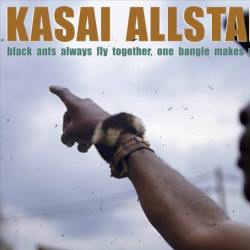
|
-
A decade and half ago, the Kasai Allstars were one of a handful of bands featured on Congotronics, and as a result, got swept up in the sudden burst of praise and hype surrounding label mates Konono #1, who seemed to benefit in particular from the attention. Suddenly, raw, relentless DIY sounds from the war-ravaged central African nation were to be found in hip vinyl shops in the west.
Their 2008 debut capitalizes on the Western popularity surrounding Konono #1. And the record showed the group, featuring musicians across multiple ethnic groups from as many other bands, engulfed in a wondrously monotonous thud; likembes, xylophones, hand drums, and empty gin bottles battled it out for space underneath hypnotic guitar curlicues as singers kicked up dust. Their newest recordings, Black Ants Always Fly Together, One Bangle Makes No Sound, come as something of a surprise departure. The thick, distorted likembes are still present, as are the pugnacious guitar patterns. Yet this is an altogether sweeter, less unyielding affair.
Bruce Miller reviews this new release, and you can listen to some songs and watch a video.
|

|
-
Tuvan band Yat-Kha is basically singer/guitarist Albert Kuvezin and an assortment of other people. The thread that's wound through the music is the man's kargyraa overtone singing style, the sound mostly associated with Tuva. In his case though, it's more of an undertone, so deep it's in the sub-sub-basement and still falling towards the center of the earth. We Will Never Die, partly made before the pandemic and completed in isolation, is just Kuvezin and Sholban Mongush on igil (two-strong horsehair cello). It offers plenty of space for the voice, and also Kuvezin's effective guitar work, while the cello fills out the music in a very satisfying way. There are traditional pieces, and plenty of surprises, including a cover of Black Sabbath's "Solitude."
Chris Nickson takes you to Tuva.
|
Support RootsWorld. Subscribe to Music of the Month.
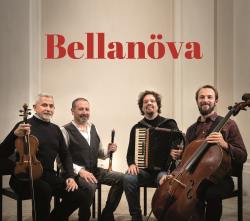
|
-
Stefano Valla and Daniele Scurati have been leading names in the piffero and accordion music of Quattro Province, the 'four provinces' of the Apennines – Genoa, Piacenza, Alessandria and Pavia, for decades. On a new self titled album, they are in company with two classical musicians - violinist Marcello Fera and cellist Nicola Segatta as the quartet Bellanöva. Composer Fera describes his first encounter with Valla and Scurati as "an epiphany." The result of their meeting is a set of traditional tunes and songs from Valla and Scurati's repertoire given splendid arrangements by Fera. It's a transformation that works beautifully; the quartet, on the face of it a sort of chamber-music group, makes something much bigger in sound, rich and magnificent; the accordion and cello working together like a whole orchestra, topped off by the eloquent violin and the thrilling graininess of the piffero.
Read all of Andrew Cronshaw's review and listen to this new music.
|

|
-
Singer and button-accordionist Celina da Piedade's singing, playing and joyful charm is one of my absolute favourite things about Portuguese music. There's no other singer/accordionist in Portugal like her, and in her very distinctive sunny way she captures the melodious richness of Alentejo song. Ao Vivo na Casinha is a recording of a live-streamed concert. It well captures her warmth and the beguiling, very Portuguese delicate grace-noting and slight vibrato of her singing. She's deeply involved with the traditional singing of the Alentejo region where she lives, south of Lisbon and the river Tejo (Tagus). The material on this album is predominantly cante alentejano (Alentejo song), the vibrant songs in two-part unaccompanied polyphony still sung by village and town groups.
Read Andrew Cronshaw's review, listen to some of the music, and see a few videos made by other artists as part of a pandemic challenge thrown down by Celina da Piedade.
|

|
-
The Comoro Islands lie in the Indian Ocean to the north-west of Madagascar and are the location for renowned producer Ian Brennan's latest recording. The key to his approach is straightforward in principle, though not necessarily in practice. The aim is to document local music in situ with a minimum of interference, allowing the power of the music and song to be carried on its own terms, but of course things don't always go according to plan. Brennan and his wife and working partner Marilena Delli Umuhoza took six flights to get to Grand Comora, the largest of the islands, hoping to record a seldom heard double-reed pipe called the ndzumara, only to be told on arrival that the last living player of the instrument had recently died. Through word of mouth they made contact with another fine musician and singer called Soubi plus his friend and mentor Mmadi, both of whom they proceeded to record, and We are an island, but we're not alone is the result... Soubi and Mmadi present five songs each, on aspects of their everyday life, mainly accompanying themselves on the ndzendze, a box-zither related to the Malagasy valiha, and in Soubi's case also on the gambussi, a type of lute. The vocal styles of the two men are quite different. Mmadi is usually hotly impassioned while Soubi's voice is lilting and melodious.
Hear some of their original songs and read Mike Adcock's musings.
|
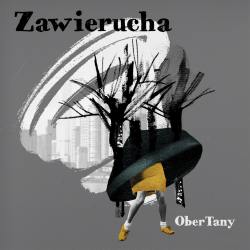
|
-
Zawierucha is a fine new band springing and evolving from Poland's village dance music revival. Its name means "turmoil" or "storm." Piotr Zgorzelski, player of basy (cello-sized folk bass), teacher of village dance and ex-member of the revival-pioneering Janusz Prusinowski Kompania, is joined, on violins and octave violins, by one of the revival's new young stars, fiddler Kacper Malisz from the Kapela Maliszów family trio, and Marcin Drabik, a leading fiddler in traditional, jazz and rock fields, plus Kamil Siciak on traditional and non-traditional drums and percussion. There's a great variety of approaches here, as the group takes interesting contemporary steps away from the typical traditional sound.
Listen to some songs and read all of Andrew Cronshaw's review.
|


|
-
If weird came in sizes from XS to XXXL, then The Best Japanese Music You've Never Heard would clock in somewhere around an XL on the scale. Not so alien it sounds as if it's from another planet, but heading towards the edge of this one. It certainly goes for it from the start as singer Utsumi Eika teams with a cocktail full jazz band on a traditional minyo (folk) song, "Don-Don Bushi." To Western ears it makes for a strange, unlikely pairing, a clash, really. but it sets the tone for tracks from different artists where Japanese rap meets folk, shamisen meets surf, and other artists carry the traditions into some deep and dusty musical territory, upping the strangeness quotient.
Read about and listen to the diverse music of Japan's folk-pop scene, collected by noted Asian music collector and provocateur, Paul Fisher.
Chris Nickson reviews the set.
The Best Japanese Music You've Never Heard is out latest selection for Music of the Month. Find out how to subscribe and get a copy of this new release.
|

|
-
Tindia are a five-piece all-female band based in Budapest and with their strong debut album they are following in the footsteps of others from their country. In Hungary there's a history of composers and performing musicians actively collecting folk songs and tunes by visiting rural areas, sometimes beyond the borders of Hungary itself, to capture musical treasures before they disappear. Bartók and Janácek took music they found on such trips as a starting point for many of their compositions and since then bands such as Muzsikás and Vujiicsics have collected and recorded material from different parts of Hungary and beyond. Now Tindia, who themselves have studied and collected folk music, have chosen to present traditional music of the Csángó people who live in Moldavia but originally travelled there from Hungary.
Listen to the music and read what Mike Adcock has to say.
|

|
-
Pat Conte spent a decade and half on New York airwaves, spinning records from his own vast collection on a show titled "The Secret Museum of the Air." He presented US immigrants, Burmese harpists, Ugandan endingidi masters, or Andean charango experts. Yazoo Records released collections of his treasure trove in the 90s. Now, Brooklyn-based performance space and label Jalopy have helped keep Conte's work available. Aside from releasing an album of Conte's own music in 2010, they have brought us the first Secret Museum of Mankind collection in 23 years. Not surprisingly, it is well worth the wait. Here, we get exquisite flamenco, Greek solo bouzouki, Ghanaian highlife, Hindustani steel guitar and much more. Like many of the original volumes in the series, the music hops the globe; yet, because of the focus on guitar and guitar-adjacent instruments, the sounds here feel more homogenous than some of his other collections.
Read more about The Secret Museum of Mankind: Guitars Vol 1: Prologue to Modern Styles in Bruce Miller's review, listen to some of the music, and meet Pat Conte in an interview from 2000.
|

|
-
Piers Faccini creates with a quiet restlessness. His songs, painstakingly crafted, seem nonetheless to want to take him further on. He has collaborated with artists as far-flung as Vincent Segal, Ibrahim Malouf, Blick Bassy, and Mayra Andrade, as well as Ben Harper and Abdelkebir Merchane who are featured on his new album, Shapes of the Fall. He, and they all, are thinking, engaged artists with soul, helping to make the world smaller and bigger at the same time. Faccini has put together a bewitching mix of shapes. There are topical and poetic musings, songs of love, even a couple of foot stompers. A number of the tracks celebrates the irrepressible Maghrebbi roots of his Southern Italian patrimony, showcased in the magical mystery music (and musicians) of the Gnawa and other tribal keepers of North African traditions.
Carolina Amoruso take you to the Fall.
|
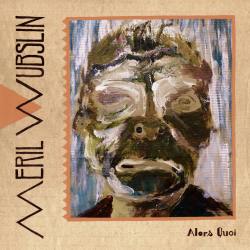
|
-
While so many of us look to lyrics when we observe how songs can tell stories, often as not the real stories are in the music itself. If it's a collective improvisation, there might be a narrative arc. Songs based on drone often add layers, subtly suggesting a change only noticed when the listener is immersed. These additions build to climax, finally letting the listener loose as the sounds subside.
The music on Meril Wubslin's Alors Quoi has stories to tell. This is due to a sense of slow, brooding tension in these tracks, as if they give off a warning. There's an undercurrent of panic in these gorgeously repeated, often guitar-driven riffs. The vocals, sometimes in chorus, float over the minimal chords like ghosts slithering in and out of cracks in long-abandoned buildings.
Bruce Miller takes you on a sonic adventure.
|

|
-
There is something classic about the start of Samba Touré's new album Binga: a solitary electric guitar plays a repeated riff, then things begin to build as in turn an acoustic guitar, hand-drums, the lead vocal and finally backing vocals join the proceedings. It's an old device but in the right hands it can still draw you in and make you just want to stick around. It certainly works here... The title Binga refers to the region just south of the Sahara where Samba Touré grew up before moving to Bamako to find work. The songs - traditional and original - reaffirm his continuing connection with these roots and as he has said himself, "Even if it's complicated or dangerous to travel to the north now, it's still my homeland and always will be. I have a house there. It's my culture and my heritage. This is my region and it felt right to name this album after it. It's pure Songhai music." Whilst the album begins and ends with traditional songs, the rest are originals, mostly songs commenting on social issues including education and migration.
Read Mike Adcock's review and listen to some of the music.
|


|
-
Antonis Antoniou is an old friend to many of our readers. His work is deeply rooted in the complicated musical and social traditions of Cyprus, where streets were literally divided by steel barrels to separate Turks from Greeks during some of the country's most difficult times. Kkisméttin (fate, destiny, kismet) was made during the pandemic lockdown we have all been living with, and Antoniou took this as an opportunity to create new songs that could speak in various ways about that loss of freedom, and its parallels in the rest of our lives.
The songs on the album are not blunt political instruments, but poetic references that cut slowly, but cut deep. He writes not in political screed, but in prose poetry that elicits the beauty of the island and the wonder of its diverse population.
Read Cliff Furnald's review and listen to some of the music.
The album is our Music of the Month selection for April, 2021
|

|
-
I hope by now the impression abroad that the only Portuguese roots music is fado has is known to be as false a stereotype as all Spanish music being flamenco, or all Americans cowboys. Portugal has a rich variety of regional rural traditional musics, and indeed the melodies of some, particularly those of Alentejo, have shaped the urban Lisbon fado. A unifying aspect of all these musics, though, and of the people in Portugal who perform and listen to them, is a great appreciation of melody, and warm, expressive singing. Sara Vidal is a Portuguese singer and harpist, and for all of her well-known work with many other ensembles, Matriz is her first solo album. It's a collection of traditional songs from the Portuguese regions of Beira Alta, Beira Baixa, Alentejo, Algarve, Ribatejo, Trás-os-Montes, Minho and the archipelago of Madeira.
Read Andrew Cronshaw's review and listen to some of the music.
|
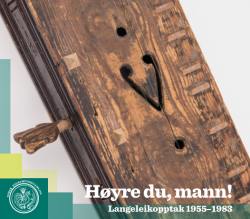
|
-
Langeleik is a form of table-top zither which, like the more widely known Hardanger fiddle, is a uniquely Norwegian instrument. The recordings in Høyre du, mann! - Langeleikopptak 1955-1983 are drawn from the archive of the Norwegian Collection of Folk Music at the National Library in Oslo, and celebrates the langeleik in 42 relatively short tracks. The langeleik goes back in time considerably further than the Hardanger fiddle and the instrument played on the track "Vals etter Arne Hasvoldseter," which is inscribed with the year 1524.
The CD contains a descriptive booklet, partly in English, which includes photographs of instruments and players. It seems that most of these archive recordings were made specifically for documentation, principally to capture traditional ways of playing before they disappeared altogether. The fact that most of the players heard in the earlier recordings on the album were in middle or old age at the time (the oldest, Ingeborg Lunde having been born in 1875) is perhaps an indication that the langeleik playing tradition was not being taken up by many from the younger generation.
Come explore the archive with Mike Adcock.
|

|
-
Start up the opening track of Himla's self-titled debut, and for a moment the voice and guitar transport you right back to those days of the '70s singer-songwriters – the haunted female voice and resonant guitar arpeggios. Listen just a little longer, though, and it's apparent this isn't merely nostalgia. A clarinet creeps into the song, nosing around the tune, then cello joins in, using a high register, more like viola or violin. The melody is quite bewitching – the equal of anything from five decades ago – with an edge of familiarity, but very quickly there are plenty of touches of the unusual in the arrangement. And with that's it's immediately clear that Adine Fliid and her two band mates - Oda Dyrnes and Siri Iversen, have something rather special here. While the instrumental choice might appear to be limited, the trio conjure up a broad range of moods. It's helped by Fliid's songs, which sometimes swoop in from oblique angles...
Join Chris Nickson and listen to something unique and new.
|

|
-
Hot on the heels of his collaboration with singer and guitarist David Walters (reviewed a few weeks back) comes a new release under his own name from kora-player Ballaké Sissoko, though the album has been in the making since 2018. Djouro is also a collaboration, with eight different artists, each making a single track appearance. They include Salif Keita, Vincent Segal, Arthur Tebou, Sona Jobarteh, Oxmo Puccino, Patrick Messina, Camille, and Piers Faccini.
On the title track Sissoko is joined by kora-player Sona Jobarteh from The Gambia, the first woman from her griot tradition to play the instrument professionally. Djouro is a Bambara word meaning string, an apt title for a duo sharing forty-two strings between them. As an album title it has a more metaphorical meaning for Sissoko, suggesting the musical thread running between the diverse artists involved.
Read Mike Adcock's review and listen to some of the music.
|

|
-
In the slow opener of Anástasis, "Rise," Stefanos Dorbarakis's kanun plays a long, thoughtful solo intro. A voice enters, floating over it, and then bowed bass, lyra and laud join in to develop and enrich. Katerina Papadopoulou is the singer, and a very fine one indeed, but this is very much a group album, showcasing equally the work of the six top-class instrumentalists: Kiriakos Tapakis (oud, laud), Giorgos Kontogiannis (Cretan and Aegean lyres), Chariton Charitonidis (bagpipe, tsambouna, floghera), Theodoros Kouelis (bass), Manousos Klapakis (percussion) and Dorbarakis (kanun).
Excellently, spaciously live-recorded, they make a perfectly balanced ensemble in an unusual and varied set of traditional music from the area of present-day Greece and the Greek-rooted traditions of the wider Mediterranean, including from Thrace, Macedonia, Ikaria, Smyrna, Pontus, and a tarantella from southern Italy.
Join Andrew Cronshaw on a journey through old Greek music.
|

|
-
In Fading Light is a jazz inspired album with the unusual combination of piano, oud and trumpet. The Greek pianist, composer, improviser and band leader Tania Giannouli plays the main role here, with Andreas Polyzogopoulos' trumpet and Kyriakos Tapakis' oud adding important nuances to the instrumental experience as a whole. The album was recorded in 2020, which of course has been a unusual year worldwide. Giannouli says, "Despite what's happening to our world at present, people need music. They need art. It is not a luxury. It's essential for our psychology, for maintaining health and balance – mentality, physically, emotionally, spiritually, and even politically."
The all instrumental album successfully gives the listener freedom to explore and choose their own path.
Maria Ezzitouni takes you along on their different route to Greece.
|

|
-
#MeToo and Black Lives Matter are bringing consciousness if not yet change to many societies of the so-called developed world, where entrenched systems of oppression towards women and people of African decent, if not all people of color, prevail. Afro-Brazilian and female, Luedji Luna is in the crosshairs of this oppression. Bom Mesmo É Estar Debaixo D'Água, of which she is singer-songwriter, co-arranger, and co-producer, is her second album. The album is a personal, intimate statement that decries the objectification of Black Brazilian women like herself as the most sexually desirable and the easiest to exploit.
There are no throw-away tunes on the album; each one has its message and its own signature, bolstered by bright accompanists with jazz and fusion chops inevitably, but lightly lilted by the Brazilian breeze. Luna enlists other women's words of poetry and song to amplify her own, which she delivers in alluring, tempered vocals that at times graze the coquettishness of Brazil's pantheon of MPB female vocalists. Read Carolina Amoruso's review and listen to some of the songs.
|

|
-
Cypriot composer, percussionist and singer Vassilis Philippou - on bendir, riq and tombak, is joined by illustrious colleagues on Sol Aurorae, an elegant album of his compositions that fit very naturally into the eastern Mediterranean modal music tradition. His group here consists of Michalis Kouloumis (violin, viola), Giannis Koutis (oud, guitar), Meir Gassenbauer (ney) and Michalis Messios (double bass). Guesting, on lyra is Zacharias Spyridakis, and on kopuz the multi-talented Efrén López Sanz. It's an ensemble work, interpreting and exploring Philippou's songs and instrumental compositions. In the rich instrumentation, fiddle and lyra edge into yearning, duskily fluting harmonics, with gutty oud, breathy ney and double bass, underpinned by his deeply resonant hand drums that blend melodically rather than driving or showing off. Read Andrew Cronshaw's review and hear some of Philippou's compositions.
|


|
-
Like most of the major islands in the Mediterranean, Corsica has had its share of invaders, conquerors, visitors and immigrants... All this turmoil makes for a unique culture with its own unique institutions, language and music. Most familiar of the musical part of that is the vocal music of the island, pulifunie, the polyphonic choral tradition that has had a resurgence since the 1960s and some of those choral groups have achieved some small international fame, as well as attention from contemporary composers.
On their fifth recording, À principiu, L'Alba straddle the old and the new, with strong vocal references to the traditional polyphonic singing and nods to contemporary folk and jazz. They embrace the many influences that have flowed through the island, from Arabic, North African, Italian and French inhabitants and visitors, as well as reaching out further to places like Greece, Portugal, Senegal and Zimbabwe... L'Alba are not here to recreate the past, but to remind us that past and present are separated by a very thin line and crossing it is both a challenge and a blessing. Read the editor's full review and listen to some samples of the music.
À principiu is RootsWorld's Music of the Month selection for March. Subscribe monthly, or buy this one CD, and support the magazine and radio program.
|

|
-
Nocturne finds Marseilles-based singer and guitarist David Walters taking a change of direction from his last release Soleil Kreyole, with its urban dance rhythms and expansive sound. This is a purely acoustic affair featuring just three other musicians (Ballaké Sissoko, kora; Vincent Ségal, cello; and Roger Raspail, guitar) but this paring down has not been at the cost of a rich musical texture. On the contrary, it has allowed each musician space to explore the distinctive qualities of his chosen instrument as well as finding the common ground shared with the other two. A limited palette can bring a greater cohesion to ensemble playing and this is a case in point. Walters moves between three different languages in his songs - French, English and Martinican Creole, reflecting his own background growing up in France with Caribbean parents...
Read Mike Adcock's review and listen to some songs.
|

|
-
No one can say The Nordic Fiddlers Bloc are profligate with their releases; in 12 years together, this is just their third, and their first since 2016. But they make every track, every single note count on Bonfrost, and those years of playing and touring together have given them a majestic kind of empathy that illuminates the music. The three fiddlers - Olav Luksengård Mjelva from Norway, Andres Hall from Sweden, and Kevin Henderson from the Shetland Isles ( with one cultural foot in Scandinavia and the other in Scotland, play instruments that complement each other to perfection: fiddles, viola, octave fiddles and Hardanger fiddle.
Chris Nickson reviews. Listen to a few tracks, plus a pandemic video bonus.
|

|
-
Leyla McCalla's Vari-Colored Songs, was her first solo album, issued as a limited run in 2013. McCalla's intention to acquaint listeners with Hughes' poetry by putting his words to her compositions is laudable. Hughes is a giant among writers, intellectuals and activists, a keystone of the Harlem Renaissance of last century's 20s and 30s that produced a starburst of intense Black brilliance in music, the fine arts and literature, as well as thought; the Harlem Renaissance also served as a forum to define and legitimize pride in one's blackness. McCalla, who is of Haitian descent, sets eight of Hughes' poems to her string band, country, and New Orleans style music, interspersing these curiously with traditional Haitian fare. Two compositions of her own are included, music and lyrics both. All told, it is an idiosyncratic and intriguing collection that yields mixed results.
The reissue of Vari-Colored Songs is timely for its devotion to Hughes and his deceptively simple, yet profound and beautifully cadenced Afro-centric writing, as a harbinger of Black Lives Matter, and his poems, indeed all of his writings, both personal and emblematic, are a reminder that we are still awaiting a national reckoning on race.
Carolina Amoruso delves into this complex endeavor. Read and listen.
|
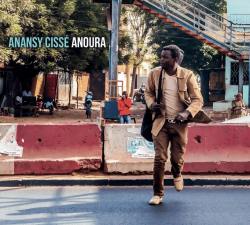
|
-
Anoura, the new album by Malian singer and guitarist Anansy Cissé, was produced over a period of four years against a background of political turmoil in the north of Mali where Cissé is from. The sleeve notes tell us that that some of the songs, all sung in his own Songhai language, reflect this particular social situation while others express more personal feelings. The four years have allowed time for the production to be well honed and with its thoughtful layering of interlocking guitar overdubs it certainly feels like a studio album, but it's none the worse for that and never sounds overworked. Throughout the album there is an extremely effective play-off between the acoustic and electric sounds coming from guitar, ngoni and, on two tracks, the soku, a Malian fiddle.
Read Mike Adcock's review and listen to some excerpts from the new album
|

|
-
Orava - Panorama Of Folk Song And Music Culture comes as a very nicely put together package: two CDs, in a 74 page hard-back book in a protective sleeve containing lots of color photos and details of the performers, texts about the project, song lyrics, and a map of the region. It features music by performers from 19 villages in the Orava region, which is at Slovakia's northern tip, bordering on Poland.
It features male and female singers solo and ensemble, in unison and harmony, unaccompanied or joined by diatonic accordions, fiddles, string bands, bagpipes, or whistles including píštalka and koncovka. It's strong, loud singing, characteristically often pushing to the very top of the singers' registers, as is much Slovak singing particularly in the mountainous areas, and the melodies are in the distinctive modes that are typical of much old Slovak tradition, returning frequently to the root note but nevertheless having a feeling of suspension.
http://www.rootsworld.com/reviews/orava-21.shtml
Join Andrew Cronshaw in exploring the music of this region.
|

|
-
Alostmen, a quartet centered on two-stringed lute player Stevo Atimbire, are pushing music forward a bit differently; their approach is much more rooted in Ghana's past. For one, Atimbire's kologo is an instrument that connects to fra fra tribespeople in the country's north. And certain tracks, such as the unadorned "Bayiti," driven by voice and solo kologo, are unmistakably West African, the voices repeating singular words over the melodically minimal music. Yet, Alostmen are young guys as into hip hop or reggae as anything traditional, which is why their music sounds so startling fresh.
Read Bruce Miller's review.
|

|
-
There is always a sense of satisfaction when two veterans from entirely different musical scenes join forces to create something genuinely new and different, the feeling that old dogs still have some new tricks left. Poul Lendal is certainly a respected old dog of Danish folk music; after more than four decades as a performer and teacher he's pretty much a godfather of it all. David Mondrup's time with electronic music isn't quite as long, but he's established a reputation as one of Denmark's great innovators and teachers of the subject. As Vaev, the pair have come up with something that steps outside the sometimes-jaded boundaries of folktronica.
Chris Nickson shows us an interesting new kind of folk music from Denmark.
|

|
-
Ville Ojanen is from Finland's fiddling nexus, Kaustinen, and over the years has been a member of Sikiät, the dance group Ottoset, Folkkarit and Troka. While still a part of that scene, and the Kaustinen accent and its evolving tradition is strongly there in his compositions, he moved away geographically, the music he composes is wider in its influences, and while he's a very fine fiddler, his albums aren't about showcasing his fiddling, with other instruments in an accompanying role; they're albums of his compositions, featuring a variety of musicians. This is his fifth, with a titular tie-up he must have been waiting for: the Roman numeral V, 'viisi' - Finnish for five and his first initial.
Listen while you read Andrew Cronshaw's review.
|

|
-
Influenced by the Latin-American nueva canción movement as well as the 1960s British invasion which they were exposed to growing up, Los Bunkers learned their musical chops as a Beatles cover band in the Biobio region, hence their original moniker Los "Biotles." With the return of democracy and a limited but vibrant music industry they moved to Santiago. It seemed that this young Chilean band incarnated not just the psychedelia of the British invasion, but also the emancipatory power of Chilean folksong.
David Cox explores the history of this important Chilean band.
|
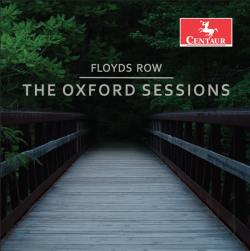
|
-
Despite having been formed nearly a decade ago, Floyds Row, named for a thoroughfare in their home base of Oxford, have but one album to their name. Recorded in 2013 and bearing a 2017 release date, The Oxford Sessions has a classical and early music air with some folk and traditional tinges. The core ensemble is the trio of Alistair Anderson (concertina, Northumbrian small pipes), Andrew Arceci (viola da gamba, double bass) and Chris Ferebee (guitar, mandolin, cittern, lyre). Vocalists Hannah James and Joshua Copeland, flautist Becky Rea and harmonium player James Percival are listed as guests. Split evenly between original compositions and arrangements of others' works, the tracks are more likely to make you lay back and ponder rather then get up and dance.
Tom Orr shows that here at RootsWorld, it does not have to be new to be newsworthy.
|


|
-
In 2009, Omar Sosa made an eight-country tour of East Africa. The tour resulted in the film documentary "Souvenirs d'Afrique," and an evocative trove of Sosa's improvisations with local traditional artists during each of the tour stops. More than a decade later, and the consequence of close and sympathetic listening across half a continent, An East African Journey achieves what few so-called "world music" undertakings ever manage. Sosa's playing is restrained throughout, engaging with, augmenting, and building upon the subtle creations of his artistic partners, rather than using their striking and diverse talents as mere spice for his own work. What makes this title still more compelling is its departure from European and North American artists' more typical turn to West Africa for genre-bending musical inspiration.
Sosa collaborates with Olith Ratego (Kenya), Rajery and Monja Mahafay (Madagascar), Abel Ntalasha (Zambia), Steven Sogo (Burundi), Seleshe Damessae (Ethiopia), Dafaalla Elhag Ali (Sudan) and Menwar (Mauritius) on the 13 tracks presented on his new release.
Michael Stone delves into this fascinating approach to collaboration. Read his review and listen to some of the music.
|

|
-
There has been some sniffiness among purveyors of… call it what you will, but 'world music'… about the 'fusion' word. Indeed its use can sometimes warn of music that, though often skillfully played, might turn out to have a rootless superficiality. So, on the face of it, Folklore Fusions is not a promising title. But, at least for the 'folklore' part, in today's stream of recorded music in all its formats perhaps there's some sense in giving the prospective listener some clue as to what sort of thing they will hear.
Shum Davar, based in Prague, is a band whose members have Belorussian, Georgian, Czech and Slovak backgrounds, playing music drawing mainly on klezmer, Roma and Balkan traditions. Fusion, folklore or whatever, they have excellent material, both traditional and new-made, and they do it with such fire and originality that one's immediately engaged in the album's well put together flow.
Read Andrew Cronshaw's review and listen to some excerpts from the album.
|

|
-
Initially, François Couture's Souvenance fulfills the expectation that it is to be a collection of 14 dance tunes, originals but keeping well within the conventions of the tradition. Given that this is music from Quebec, it doesn't come as a surprise to find the track list includes gigues (a mainstay of the region's tradition), Celtic style jigs and reels, and melodies with a sometimes decidedly French flavor. In fact the titles of all the tracks here indicate that they are conceived as dance tunes. But as things develop things are not always quite what they seem.
Mike Adcock takes you through the twists and turns of this danceable yet challenging set of tunes.
|

|
-
On Y, Motus Laevus delivers a seriously diverse blend of new thinking and traditional melodies, ranging from slow and relaxing tunes to fast arrangements that makes you want to dance. The musicians behind the project, Edmondo Romeno, (soprano sax,clarinets, and chalumeau and fluier - wooden flutes). Tina Omerzo (voice, piano, keyboards) and Luca Falomi ( acoustic, classical, baritone,12 strings and electric guitars, acoustic bass) all have impressive backgrounds in playing, composing and researching a variety of musical genres.
Maria Ezzitouni reviews. The band shares two videos.
|
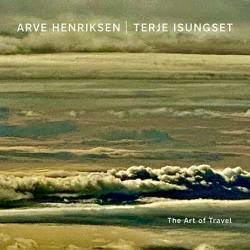
|
-
While drummer Terje Isungset and trumpet player Arve Henriksen (who both double on several other instruments here) have long musical histories apart and together, more apart, really; this is their first duo release in six years. The Art of Travel is an album that delves deep to find hidden corners and curious nooks and crannies, the way all good travellers should. The pair show that there is an art to their particular type of travel, crossing through chaos to find order and beauty in the music. It's a mix that travels through time and space, on files exchanged online between their homes in Norway and Sweden during lockdown.
Chris Nickson takes you there to listen.
|

|
-
"I wanted to make a record, both of us did, that had a strong female voice, without any apology for that."
Sad, funny, poignant, quirky. The new album from Suzzy Roche and her daughter, Lucy Wainwright Roche, is indelibly colored by the surreal, frightening first weeks of the pandemic, which stopped New York City in its tracks, though this duo found a way to wriggle through and create a comforting and discomforting elegy for our times.
Marty Lipp talked to Suzzy Roche about the new recording, life in lock down in NYC, her sisters, and of course, her daughter Lucy.
|

|
-
Bará is a trio based in Europe, but the music has roots that spread much wider. Vocalist and ngoni player Baba Sissoko hails from Mali and his original songs call on that country's rich traditions. Percussionist Afra Mussawisade was born in Iran where he studied Persian classical music but he moved to Europe as a child, soon becoming exposed to other musical styles. Jozef Dumoulin, on keyboards, is Belgian. He began his career studying jazz piano but his inspiration now comes from a much broader musical field. All three musicians have worked with a wide range of international musicians in concerts and recording and have played together before, but this is their first venture recording as a trio. The result is an album that sounds fresh, varied and rather special. Whilst each musician makes his own distinct contribution to Bolo Saba, there is a sense of unity and purpose in the music that belies the differences between them.
Read Mike Adcock's review and listen to some of the songs.
|

|
-
Ásgeir Ásgeirsson is an Icelandic player of bouzouki, saz and more. Since 2017 he has been creating a big, beautifully executed project: a trilogy of albums of Icelandic folk songs and melodies from Bjarni Thorsteinsson's 1905 collection, interpreted and developed from the perspective of the traditions of Turkey, Bulgaria and Iran. Featuring top musicians from those places, with the songs largely performed by Icelandic singer Sigrídur Thorlacius, they were recorded in studios in Iceland, Bulgaria, Greece, Turkey, the Netherlands, Iran and India.
This year brings the final album, Icelandic Folksongs Volume 3, Persian Path. Its instrumentation comprises a rich orchestral blend of qanun, santur, oud, ney, kamanche, qeychak, setar, violin, cello, percussion and Ásgeirsson's instruments which here include touches of guitar synth. They mould themselves to the Icelandic material, elaborating and extending it with arrangement and composition by Ásgeirsson and the players. The result is a sweeping, indeed epic, flow of melodies.
Read Andrew Cronshaw's review and listen to some of all three recordings in the series.
|
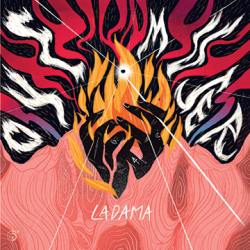
|
-
"Inside my mountain, hay un misterio."
With these suggestive words, the first line of the first track of Oye Mujer (Listen Up, Woman), Ladama lays down their brand of sexual politics vaunting empowerment and liberation on their own terms. Ladama (La Dama—the lady, without a facetious undertone) is an all women collective of players from the Latin American world, including the US. Ladama isn't intent to merely throw down a velvet gauntlet of sexual empowerment. The group has also taken up, notably as women, the web of urgencies of the day, including global warming, homelessness, poverty, immigration, indigenous rights, and more. Ladama is not just a mouthpiece against indignity: these women are serious musicians, all, and care equally about their art as players, composers, lyricists and arrangers, achieved, they are proud to disclose, collectively. Their commitment to mastery as women musicians engages the listener, lending more agency to their message.
Read Carolina Amoruso's review and listen.
|
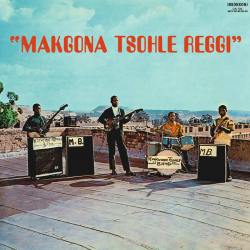
|
-
Makgona Tsohle Reggi is a collection of ska and jerk-inspired instrumentals by the Makgona Tsohle Band. But this is decidedly not a reggae or ska record. What it is instead is a collection of twelve sharp, terse performances featuring organ-drenched staccato chug, guitars that seem to push past the limits of their amplifiers, and saxophones-as-human-voice, all buoyed by drum patterns that skitter and jab. And while the influence of Jamaica is present, it melds so effortlessly with South Africa's own sounds of the era as to have ended up producing a type of raw, garage groove that occasionally defies geographical identity altogether.
Listen to the music and read Bruce Miller's review.
|

|
-
It's been a lousy year, but one would never know it listening to Sharon Shannon's joyous new album The Reckoning, which was conceived, made remotely and released through the early months of the coronavirus pandemic. We've been told that during this dark, turbulent and grueling year to find our little joys. And damned if Shannon hasn't done just that, finding joy in her squeezebox, tootling out tunes with a band of co-conspirators from around the world, managing a virtual worldwide trip while staying locked down in her County Galway home.
Read Marty Lipp's review.
|
Read more reviews
Latest reviews
2023
2022
2021
2020
2019
2018
2017
2016
We Interupt Our Regularly Scheduled Magazine For This Important Announcement.
RootsWorld cannot survive without the support of our readers. If you want to hear great music and read great writers, then we need each listener and reader to contribute just a little to make it happen. Please join us!
Make a One Time Contribution Today!
|
$5.00
|
$10.00
|
$20.00
|
|
$40.00
|
$70.00
|
$100.00
|
Please contribute to our survival.
About RootsWorld: RootsWorld is a world music magazine started in 1993, pretty much at the dawn of the term "world music" as well as the pre-dawn of internet publishing (I suspect this was the first music magazine of any sort published on the www). Our focus is the music of the world: Africa, Asia, Europe, Pacifica and The Americas, the roots of the global musical milieu that has come to be known as world music, be it traditional folk music, jazz, rock or some hybrid. How is that defined? I don't know and don't particularly care at this point: it's music from someplace you aren't, music with roots, music of the world and for the world. OK?
All pages at RootsWorld are © 1992-2023 RootsWorld/ Cliff Furnald / FNI Multimedia Publishing, New Haven CT
The RootsWorld name is protected by US trademark law.
All picture and sound images are the property of the artists and record labels, and are protected by copyright. No file or part of a file may be used for any purpose, commercial or non-commercial, without the express written consent of RootsWorld or the other copyright owners.
About the use of sound files and copyright protections at RootsWorld
|
